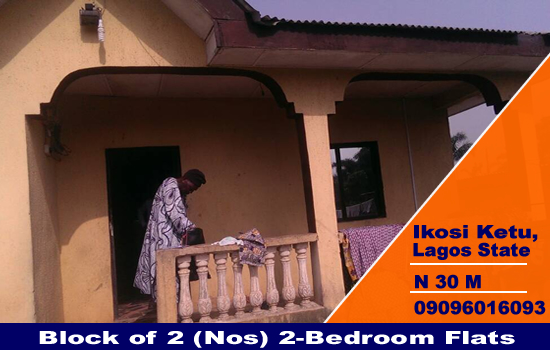Low blood pressure, or hypotension, may be a sign of good health and of a decreased risk of heart disease. But not always. At times, continually low blood pressure or a sudden drop in blood pressure can lead to worrisome symptoms and even serious health problems.
Understanding Hypotension
A blood pressure reading contains two numbers: systolic pressure and diastolic pressure. Systolic pressure is the top or first number in your blood pressure reading; it indicates the pressure within your arteries when your heart pumps out blood. Diastolic pressure is the bottom number, and shows the pressure in your arteries while your heart is filling with blood.
If your blood pressure is 120/80 millimeters of mercury (mm Hg) or lower, it’s considered normal. Generally, if the blood pressure reading is under 90/60 mm Hg, it is abnormally low and is referred to as hypotension. Some adults regularly have a blood pressure in the hypotensive range, but have no symptoms at all and do not require treatment. In serious cases, though, hypotension can result in a decreased supply of oxygen and nutrients to your brain, which can eventually lead to life-threatening shock.
Anyone can develop hypotension, but certain groups of people are more likely to experience it, and there are different types. For instance, orthostatic (positional) hypotension, which occurs when you stand up after sitting or lying down, is more common in older adults. Typically, “your body has certain compensatory mechanisms to prevent your blood pressure from falling when you stand up,” explains Willie Lawrence, MD, an interventional cardiologist at Research Medical Center in Kansas City, Missouri, and a spokesperson for the American Heart Association. But, he adds, “orthostatic hypotension is a problem for some people because these reflexes that should occur, don’t occur.”
Symptoms of Hypotension
Most doctors do not consider hypotension a problem unless it is associated with certain signs and symptoms, which may include:
- Dizziness
- Fainting
- Fatigue
- Problems concentrating
- Blurry vision
- Nausea
- Clammy, pale skin
- Shortness of breath
When Low Blood Pressure Can Strike
Some people have naturally low blood pressure, and they don't experience any symptoms. But for those who are used to having high blood pressure, episodes of low blood pressure can signal a problem and can cause the symptoms listed above.
An onset of hypotension is more likely to occur when you:
- Are on bed rest for a long period of time, and then resume an upright posture
- Are in your first 24 weeks of pregnancy
- Have lost a large amount of blood
- Are dehyrdrated
- Are taking certain medications, such as blood pressure lowering medications; certain heart medications; certain Parkinson's disease medications; tricyclic antidepressants; or medications to treat erectile dysfunction
- Have a heart problem, such as a very slow heart beat, heart valve problems, heart attack, or heart failure
- Have an endocrine problem, such as hypothyroidism, parathyroid disease, Addison's disease (an adrenal gland disorder), low blood sugar, or diabetes
- Have a severe infection that enters your blood stream
- Are experiencing anaphylaxis, a life-threatening allergic reaction
- Have a neural disorder that affects your blood pressure
- Have a nutrient deficiency, such as low vitamin B12 and folic acid levels
When Do You Need Medical Care for Hypotension?
If your blood pressure is always on the low side and you do not have any of the above symptoms, there is usually no cause for concern. Similarly, if you have a single at-home blood pressure reading that is abnormally low without any symptoms, you probably do not need to see your doctor. It is normal for your blood pressure to rise and fall over time, and your body is usually able to get your blood pressure back to normal.
But, says Dr. Lawrence, “when you sense there’s a recurrent problem, or there’s no clear explanation for what’s happened, you need to seek medical advice."
If your blood pressure drops suddenly and you are experiencing symptoms like dizziness, you should call your healthcare provider. They can assess your situation and rule out underlying problems, such as internal bleeding, serious infection, or allergic reaction.
Treatment for hypotension will depend on the cause of the low blood pressure. Immediate steps might include:
- Lying with your feet above your heart
- Drinking fluids
- Avoiding hypotension triggers like prolonged standing
After evaluation by a doctor, recommendations may include:
- Avoiding alcohol
- Adjusting your diet
- Adjusting your medications (possibly lowering dosages)
- Taking blood pressure raising medications, such as fludrocortisone(Florinef) and midodrine (ProAmatine)
- Wearing compression stockings
People who experience shock related to hypotension will need emergency treatment to restore blood flow to their organs and raise their blood pressure back to normal.
It’s important to determine whether your low blood pressure is “a primary problem or secondary problem,” notes Lawrence. A primary problem means that the body’s reflexes are not working as they should. Secondary causes mean that the low blood pressure is a result of things like dehydration or the effects of certain medications. “Some anti-hypertensive [medications] are more likely to cause hypotension than others, and a lot of it is dose-dependent,” says Lawrence. “In most people, there will be some easily identifiable secondary cause, or some easy solution to what may even be a chronic problem that has no secondary cause, and that’s why it’s important to see your doctor, so they can make an appropriate assessment.”
Keep track of your blood pressure readings, even if you don’t have any health issues, so that you know what your personal “normal” reading is. And if your blood pressure is being monitored, talk to your doctor about the blood pressure target range that’s best for you.



